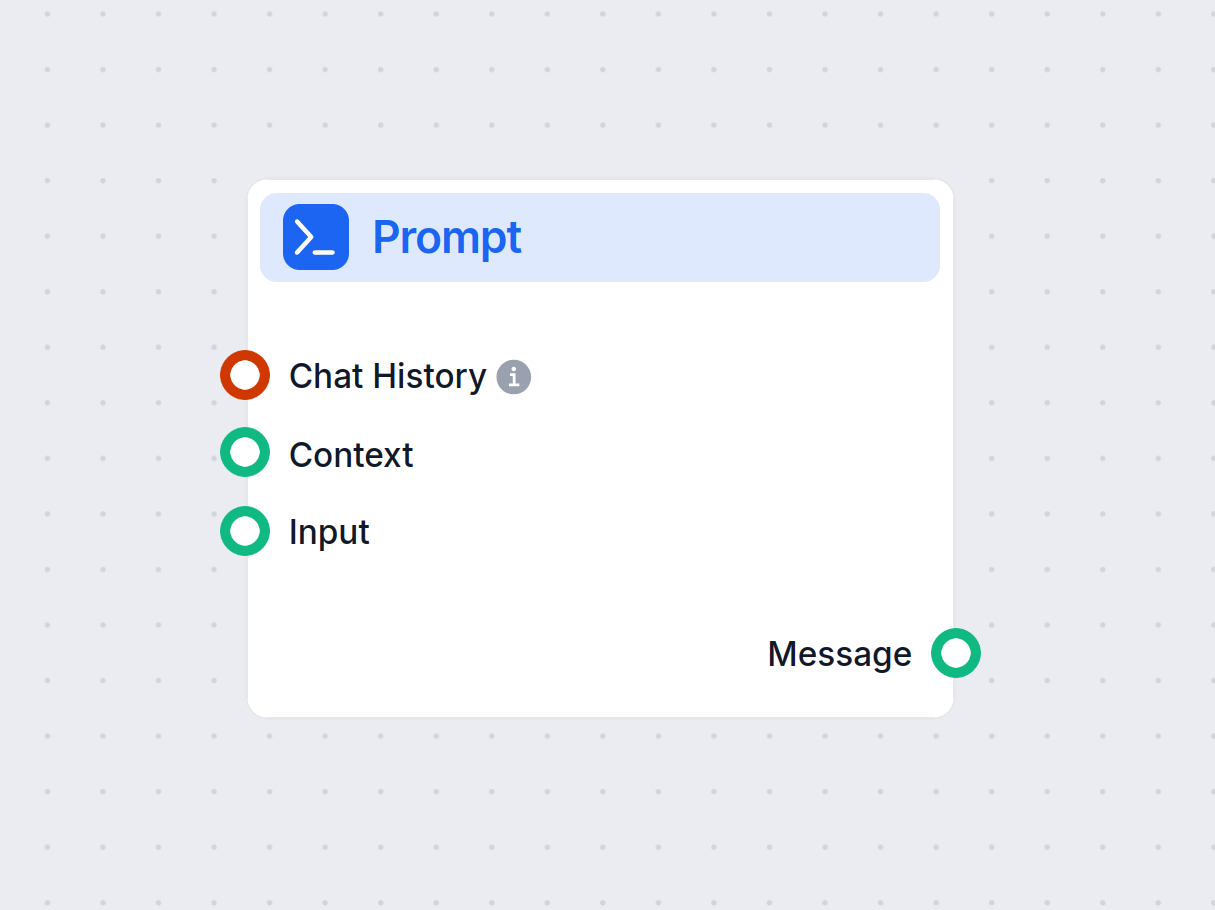
The Art of Prompt Optimization for Smarter AI Workflows
Save costs and get accurate AI outputs by learning these prompt optimization techniques.
A metaprompt is an advanced prompt that helps AI generate or refine other prompts, improving the effectiveness and accuracy of AI-driven tasks.
A metaprompt in artificial intelligence refers to a prompt that is designed to generate or improve other prompts for large language models (LLMs). It is a higher-level instruction set that guides AI systems on how to create effective prompts, which in turn produce more accurate and relevant outputs. Metaprompting is an advanced technique in prompt engineering that leverages the AI’s capabilities to refine its own instructions, thereby enhancing performance and aligning outputs with user expectations.
In essence, a metaprompt is a prompt about prompts. It instructs an AI model on how to construct prompts for specific tasks, ensuring that subsequent interactions are more effective. This approach is particularly useful when dealing with complex tasks that require multi-step reasoning or when aiming to automate the prompt generation process.
Metaprompting is used to guide AI models in crafting detailed and precise prompts, which leads to more accurate and contextually relevant responses. By utilizing metaprompts, developers and users can:
In the context of chatbots and AI automation, metaprompting plays a crucial role in enhancing conversational abilities and automating interactions. By generating tailored prompts, AI systems can better understand user intents, provide more accurate responses, and handle complex queries with improved efficiency.
For example, in customer service chatbots, metaprompting can enable the AI to generate appropriate responses to diverse customer inquiries by creating prompts that cover various scenarios. This leads to a more robust and versatile chatbot capable of handling a wide range of customer needs.
Use Case: A content creator wants to generate engaging blog post ideas using an AI language model.
Metaprompt:
“Generate a list of creative and trending blog post topics in the field of artificial intelligence, focusing on recent advancements in machine learning and their applications.”
How It Works:
The metaprompt instructs the AI to create prompts that result in a list of blog post ideas. The AI uses this higher-level instruction to craft prompts that consider current trends and advancements, producing relevant and compelling topics for the content creator.
Use Case: Improving the quality of responses provided by an AI assistant in a virtual customer support system.
Metaprompt:
“When a customer asks a question, generate a detailed and empathetic response that addresses their concerns and provides clear instructions or solutions.”
How It Works:
The metaprompt guides the AI assistant to generate prompts that produce empathetic and helpful responses. This improves customer satisfaction by ensuring that the AI addresses queries effectively and courteously.
Use Case: Coordinating multiple AI models specialized in different areas to solve a complex problem.
Metaprompt:
“Divide the main task into smaller sub-tasks, assign each to the appropriate expert AI model, and integrate their outputs to formulate a comprehensive solution.”
How It Works:
The metaprompt instructs the AI to manage multiple models, each acting as an expert in a specific domain. By generating prompts that coordinate these models, the AI can tackle complex problems through collaborative efforts, leading to more accurate and thorough solutions.
Use Case: Refining prompts to enhance the accuracy of AI-generated translations.
Metaprompt:
“Analyze the existing translation prompts and generate improved versions that consider cultural nuances and context for better accuracy.”
How It Works:
The AI uses the metaprompt to evaluate current prompts and produce enhanced ones that lead to more accurate and culturally sensitive translations. This results in higher-quality translations that are contextually appropriate.
Use Case: Creating personalized learning experiences using AI tutors.
Metaprompt:
“Design prompts that adapt to the learner’s proficiency level, providing explanations and examples that cater to their understanding.”
How It Works:
The metaprompt guides the AI to generate educational prompts tailored to individual learners. By adjusting the complexity and style of explanations, the AI can provide personalized tutoring that enhances the learning experience.
When crafting a metaprompt, clarity is essential. Provide explicit instructions on what the AI should achieve with the prompts it generates. This includes defining the task, expected inputs and outputs, and any constraints or requirements.
Example:
“Generate a prompt that instructs an AI to summarize long-form articles into concise bullet points, highlighting key insights and statistics.”
Providing examples within the metaprompt can help the AI understand the desired outcome more effectively. Examples serve as a guide for the AI to model its prompt generation.
Example:
“Create a prompt that instructs an AI to compose a professional email responding to a client’s inquiry. For instance, ‘Dear [Client Name], thank you for reaching out about [Inquiry Topic]…’”
Specify the format, language, and style guidelines you expect in the generated prompts. This ensures consistency and aligns the AI’s output with your requirements.
Example:
“Generate prompts that instruct the AI to produce reports in formal academic language, using APA formatting for any citations.”
Incorporate safety guidelines to prevent the AI from generating harmful or inappropriate content. This includes avoiding disallowed topics and ensuring compliance with ethical standards.
Example:
“Generate prompts that encourage respectful and inclusive language, avoiding any content that could be considered offensive or discriminatory.”
Implement a system where the AI’s outputs are evaluated, and feedback is provided. This loop allows the AI to refine its metaprompt-generated prompts continuously.
Example:
“After generating prompts, review the AI’s outputs for relevance and accuracy, then provide feedback to improve future prompt generation.”
Understanding metaprompting involves familiarity with several related concepts in artificial intelligence and machine learning:
Metaprompting is particularly applicable in the development of AI automation](https://www.flowhunt.io#:~:text=AI+automation) tools and [chatbots:
By using metaprompts, developers can create chatbots that generate personalized and context-aware responses. This enhances user engagement and provides a more human-like interaction experience.
Example:
“Generate prompts that instruct the chatbot to recognize user sentiment and adjust its responses accordingly, providing support or escalation as needed.”
In AI automation, metaprompting allows for the creation of dynamic content such as automated report writing, email drafting, or social media posting, all tailored to specific guidelines and styles.
Example:
“Create prompts that guide the AI to generate social media posts promoting new products, following brand voice and incorporating trending hashtags.”
Metaprompting can aid in the fine-tuning of AI models by generating effective training prompts that cover diverse scenarios and edge cases.
Example:
“Develop prompts that challenge the AI with complex problem-solving tasks, enhancing its reasoning and analytical capabilities.”
The concept of “metaprompt” in AI has been explored in various scientific studies. Here are notable research papers discussing this topic:
| Title | Authors | Publication Date | Summary | Link |
|---|---|---|---|---|
| Effective Structured Prompting by Meta-Learning and Representative Verbalizer | Weisen Jiang, Yu Zhang, James T. Kwok | March 21, 2024 | Addresses the challenges of prompt tuning for pre-trained masked language models (MLM) in natural language processing tasks with limited labeled data. The study highlights the limitations of MetaPrompting, which uses a single shared initialization for task-specific prompts, leading to computational and memory burdens. Proposes MetaPrompter, which uses a prompt pool and a novel soft verbalizer called RepVerb to enhance structured prompting. Shows MetaPrompter outperforms state-of-the-art methods. | Read more |
| MetaPrompting: Learning to Learn Better Prompts | Yutai Hou, Hongyuan Dong, Xinghao Wang, Bohan Li, Wanxiang Che | February 3, 2023 | Introduces MetaPrompting, a method leveraging model-agnostic meta-learning to improve the initialization of soft prompts in few-shot NLP. Discusses challenges of obtaining effective soft prompt initialization and demonstrates how MetaPrompting enhances performance across multiple datasets, achieving significant improvements in accuracy. | Read more |
| Prompt Programming for Large Language Models: Beyond the Few-Shot Paradigm | Laria Reynolds, Kyle McDonell | February 15, 2021 | Explores the use of prompts in large generative language models, using GPT-3 as a case study. Argues that zero-shot prompts can outperform few-shot prompts, suggesting a shift in understanding the role of prompts. Introduces the concept of a metaprompt as a way to guide models in generating natural language outputs, extending prompt programming capabilities. | Read more |
A metaprompt is a higher-level instruction that guides AI systems in creating or refining other prompts for large language models, enabling more accurate outputs and automation.
Metaprompting is used to automate prompt generation, enhance AI performance, enable multi-step reasoning, and dynamically adapt prompts for chatbots, automation, and personalized learning.
Use cases include automating content creation, improving AI assistant responses, coordinating multi-agent collaborations, refining translation prompts, and creating personalized educational tools.
Best practices include being clear and specific, providing examples, defining format and style, addressing safety and ethics, and utilizing feedback loops for continuous improvement.
Yes, recent research explores metaprompting for better prompt initialization, few-shot learning, and structured prompting in LLMs. Notable papers include 'MetaPrompting: Learning to Learn Better Prompts' and 'Effective Structured Prompting by Meta-Learning and Representative Verbalizer.'
Smart Chatbots and AI tools under one roof. Connect intuitive blocks to turn your ideas into automated Flows.
Save costs and get accurate AI outputs by learning these prompt optimization techniques.
Recursive prompting is an AI technique used with large language models like GPT-4, enabling users to iteratively refine outputs through back-and-forth dialogue ...
Learn how FlowHunt's Prompt component lets you define your AI bot’s role and behavior, ensuring relevant, personalized responses. Customize prompts and template...

